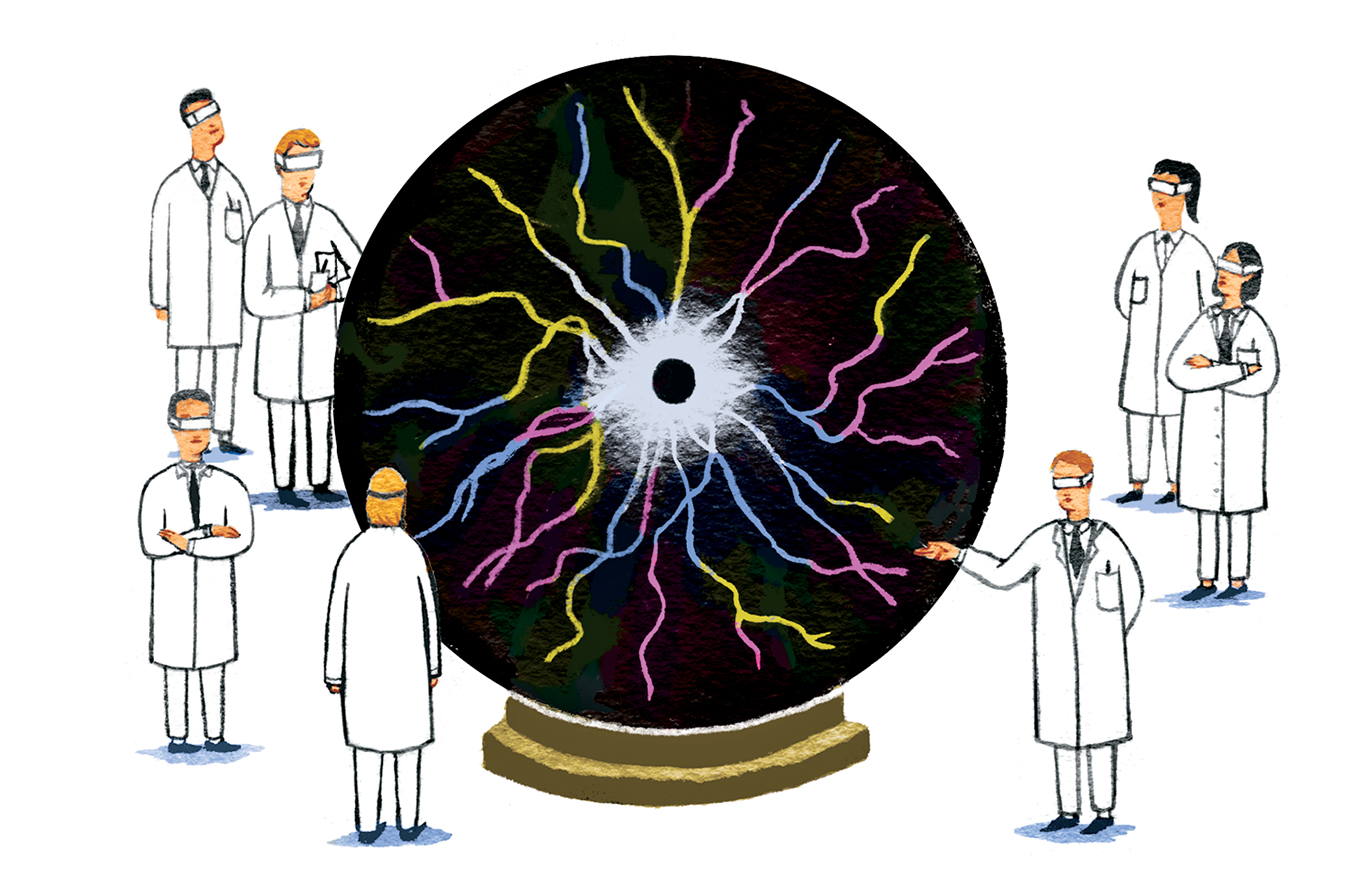Always On
The dream of limitless energy.

Take everything you know about energy—burning oil, falling water, spinning windmills, splitting atoms—and forget it. All of it. Now, what does the world look like?
Given what scientists at Lawrence Livermore National Laboratory in California have just managed to do, you may want to mull it over. For the past 60 years or so, the lab has been working to create a controllable nuclear fusion reaction, in which hydrogen atoms are smashed together at tremendous speed to “fuse” into helium—the same process that keeps the sun burning. While the lab’s work is not new, a recent result certainly is; for the first time in history, a reaction’s output exceeded the energy put into the fuel.
The scale of the work—at once both massive and minuscule—is enough to make your head ache. Imagine: 192 purpose-built ultraviolet lasers encircle a gold cylinder the size of a pencil eraser. Those lasers shoot 1.9 megajoules of ultraviolet light at a plastic sphere about the size of a pinhead suspended within the cylinder. The interior of that sphere is coated with a layer of frozen deuterium and tritium (rare hydrogen isotopes with extra neutrons) that is thinner than a human hair. When the lasers fire, the cylinder emits a storm of X-rays, which causes the sphere to implode by a factor of 35; at that moment, the pressure within measures fully 150 billion times greater than Earth’s atmosphere, and the density of the resulting plasma is almost three times greater than that at the centre of the sun. In 150 trillionths of a second, it’s all over.
Within the next decade, such stuff may become commonplace. The ITER experimental reactor, located about an hour northeast of the French city of Marseilles, is now in its seventh year of construction. A joint project between China, the European Union, India, Japan, Korea, Russia, and the United States, the reactor will come online for trials and testing sometime in 2019. The ultimate goal: to generate a sustained, commercially viable fusion reaction that produces 10 megawatts of power for every one used.
Beyond the science, the implications of fusion power are fantastic, in the elder sense of that word: wild, extraordinary, and suggestive of imagination without restraint or limit. As much as the wheel, penicillin, and sewer pipe may each lay claim to being humanity’s most useful technology, it is our ability to harness and utilize energy that forms the bedrock of civilization. In a sense, the path of our evolution is an arc drawn from the campfire to the combustion engine and on forward to the fusion reactor.
So let’s indulge and play a round of what-if: What if energy were cheap, pollution free, and limitless? What if you never had to worry about oil spills, carbon emissions, or core meltdowns ever again? What if you had enough power to run your car, heat your home, keep the lights on, and meet the needs of everyone who ever was, is, or will be, from now until—well, whenever? What else could be possible? What could we not achieve? You may need another Aspirin before you answer.




